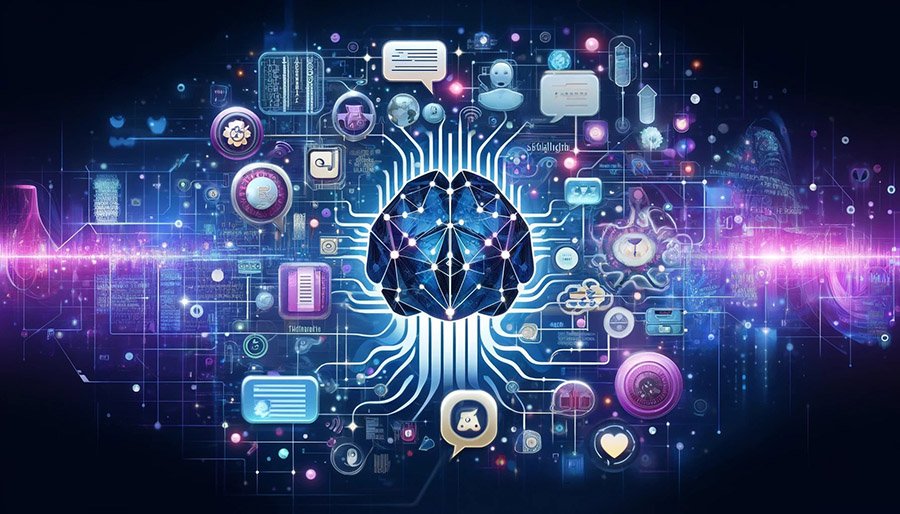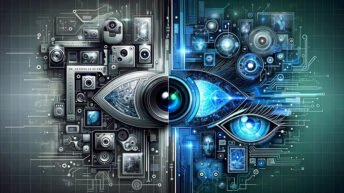Artificial intelligence has rapidly become a transformative force in technology, reshaping industries from healthcare to entertainment. Within this landscape, two influential concepts have emerged: large language models (LLMs) and generative AI.
Although these terms are sometimes used interchangeably, they represent distinct approaches to AI development. LLMs focus on understanding and generating natural language, while generative AI encompasses broader creative capabilities, including image synthesis, music composition, and code generation.
This article seeks to clarify the distinctions and overlaps between LLMs and generative AI, providing insights into their unique attributes and shared potential.
Overview of Large Language Models (LLMs)
Large language models are specialized types of AI models designed to process, understand, and generate natural language. They are trained on vast amounts of text data to predict and generate coherent text sequences.
These models use architectures like Transformers, which efficiently capture the contextual meaning of words and phrases in relation to one another.
Historical Evolution and Notable Examples
The development of LLMs has seen significant progress in recent years, starting with models like ELMo and ULMFiT. However, the release of OpenAI’s GPT-3, a model containing 175 billion parameters, marked a groundbreaking shift in the capabilities of language models. Since then, GPT-4 and Google’s BERT have expanded the applications of LLMs in natural language processing.
Primary Use Cases
LLMs have proven versatile across a variety of tasks:
- Chatbots and Virtual Assistants: They power intelligent conversational agents capable of understanding and responding to user queries.
- Text Summarization and Generation: LLMs can create summaries of lengthy documents and generate new text based on input prompts.
- Translation: They offer more accurate translations by understanding contextual meaning across languages.
Advantages and Limitations
- Advantages: LLMs excel in tasks requiring contextual understanding and creativity in natural language, making them highly adaptable to various applications.
- Limitations: They require immense computational resources for training and may produce biased or misleading outputs due to limitations in training data.
With their extensive applications and sophisticated processing abilities, large language models represent a significant leap in the field of natural language processing and understanding.
Also read: Computer Vision vs. Machine Learning: What’s The Difference?

Overview of Generative AI
Generative AI refers to a class of algorithms that can generate new data that resembles the training data. This approach aims to produce content across various domains, from text and images to audio and even 3D models.
The term encompasses different model types that specialize in the creative synthesis of data, often using architectures like Generative Adversarial Networks (GANs), Variational Autoencoders (VAEs), and autoregressive models.
Types of Generative AI
- GANs (Generative Adversarial Networks): GANs consist of two neural networks, a generator and a discriminator, that work together. The generator tries to produce realistic outputs, while the discriminator attempts to distinguish between real and generated data, leading to improvements in the generator’s quality over time.
- VAEs (Variational Autoencoders): VAEs encode data into a latent space and then decode it back into the original format, allowing for the generation of new, similar data.
- Autoregressive Models: These models generate sequences by predicting each data point or element based on previous ones, often used for generating coherent sequences of text or music.
Key Use Cases
Generative AI finds application in various fields:
- Image and Video Synthesis: Creating realistic images or videos, often for entertainment or educational purposes.
- Music and Sound Generation: Producing new musical compositions or soundscapes.
- Code Generation: Assisting developers by generating or completing code snippets.
- Drug Discovery: Designing new molecular structures with potential therapeutic properties.
Advantages and Limitations
- Advantages: Generative AI can produce high-quality creative content efficiently and personalize outputs based on specific requirements.
- Limitations: Generated content may lack originality and pose ethical concerns, particularly in the context of deepfakes or unauthorized data use.
Generative AI provides powerful tools for creating novel data, offering creative potential across multiple industries.
Comparison: LLMs vs. Generative AI
Despite their differences, large language models and generative AI share some core principles and applications:
Technical Differences
- Architecture and Purpose: LLMs are specialized for natural language processing using Transformer architectures, while generative AI employs various methods like GANs and VAEs to handle a wider range of data types, including images and sounds.
Application Differences
- LLMs: Primarily text-focused, LLMs excel in generating and understanding written content, such as writing articles, summarizing information, or holding conversations.
- Generative AI: Offers broader creative capabilities in multimedia content, from realistic image generation to musical compositions and 3D modeling.
Overlapping Features
- Training on Large Datasets: Both rely on vast training data to learn and produce high-quality results.
- Output Generation: Both can generate content autonomously or semi-autonomously based on given input prompts.
Strengths and Weaknesses
- LLMs: Their strength lies in understanding contextual nuances in text, but they struggle with computational efficiency and potential biases in training data.
- Generative AI: Excels in creating highly realistic multimedia content but often requires meticulous dataset curation to ensure quality and ethical output.
Ultimately, both LLMs and generative AI leverage advanced algorithms to generate meaningful data and contribute uniquely to the field of artificial intelligence.

Future Developments and Integration Opportunities
As large language models (LLMs) and generative AI continue to advance, opportunities for integration and improvement are emerging. Here are some key areas where these technologies may evolve and collaborate:
Synergies Between LLMs and Generative AI: By combining LLMs’ proficiency in understanding and generating text with generative AI’s ability to handle multimedia content, developers can create more comprehensive AI systems capable of producing highly personalized and contextually relevant content across text, images, and audio.
For example, an integrated model could write a story (LLM) and generate related illustrations or soundscapes (generative AI).
Advancements in Multimodal AI Models: Multimodal models can process and generate data across various formats simultaneously. For instance, OpenAI’s GPT-4 integrates vision and text processing, pointing to future developments where models can handle even more diverse forms of data.
Scalability and Efficiency: Ongoing research is finding ways to train models more efficiently, reducing the cost and environmental impact. New training methods and architectures may unlock even larger and more capable models.
Responsible AI Development: Ethical concerns are central to both technologies. Addressing issues like bias, data security, and the misuse of generated content (e.g., deepfakes) will require careful consideration. Responsible AI frameworks and stricter guidelines will help ensure these tools are used safely and ethically.
Conclusion
Large language models (LLMs) and generative AI are transformative technologies that, while sharing some common principles, bring unique strengths to the field of artificial intelligence. LLMs excel in understanding and generating text, helping with tasks such as summarization, translation, and virtual assistance.
Generative AI, on the other hand, specializes in creating new data across multiple formats, offering creative and innovative content solutions.
The future will likely witness the integration of these technologies, leading to AI systems capable of understanding, generating, and creating data in ways previously unimagined. However, this progress should be tempered with responsible development, ensuring that these technologies are ethically and securely applied.
By understanding their distinctions and potential, businesses and developers can harness the best of both worlds to unlock innovative AI applications.




Add comment